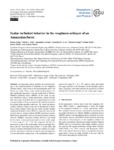Por favor, use este identificador para citar o enlazar este ítem:
http://www.alice.cnptia.embrapa.br/alice/handle/doc/1053165Registro completo de metadatos
| Campo DC | Valor | Lengua/Idioma |
|---|---|---|
| dc.contributor.author | ZAHN, E. | pt_BR |
| dc.contributor.author | DIAS, N. L. | pt_BR |
| dc.contributor.author | ARAUJO, A. | pt_BR |
| dc.contributor.author | SÁ, L. D. A. | pt_BR |
| dc.contributor.author | SÖRGEL, M. | pt_BR |
| dc.contributor.author | TREBS, I. | pt_BR |
| dc.contributor.author | WOLFF, S. | pt_BR |
| dc.contributor.author | MANZI, A. | pt_BR |
| dc.date.accessioned | 2016-09-20T11:11:11Z | pt_BR |
| dc.date.available | 2016-09-20T11:11:11Z | pt_BR |
| dc.date.created | 2016-09-20 | pt_BR |
| dc.date.issued | 2016 | pt_BR |
| dc.identifier.citation | Atmospheric Chemistry and Physics, v. 16, p. 11349-11366, 2016. | pt_BR |
| dc.identifier.uri | http://www.alice.cnptia.embrapa.br/alice/handle/doc/1053165 | pt_BR |
| dc.description | An important current problem in micrometeorology is the characterization of turbulence in the roughness sublayer (RSL), where most of the measurements above tall forests are made. There, scalar turbulent fluctuations display significant departures from the predictions of Monin?Obukhov similarity theory (MOST). In this work, we analyze turbulence data of virtual temperature, carbon dioxide, and water vapor in the RSL above an Amazonian forest (with a canopy height of 40 m), measured at 39.4 and 81.6 m above the ground under unstable conditions. We found that dimensionless statistics related to the rate of dissipation of turbulence kinetic energy (TKE) and the scalar variance display significant departures from MOST as expected, whereas the vertical velocity variance follows MOST much more closely. Much better agreement between the dimensionless statistics with the Obukhov similarity variable, however, was found for the subset of measurements made at a low zenith angle Z, in the range 0°  <  |Z|  <  20°. We conjecture that this improvement is due to the relationship between sunlight incidence and the ?activation?deactivation? of scalar sinks and sources vertically distributed in the forest. Finally, we evaluated the relaxation coefficient of relaxed eddy accumulation: it is also affected by zenith angle, with considerable improvement in the range 0°  <  |Z|  <  20°, and its values fall within the range reported in the literature for the unstable surface layer. In general, our results indicate the possibility of better stability-derived flux estimates for low zenith angle ranges. | pt_BR |
| dc.language.iso | eng | eng |
| dc.rights | openAccess | eng |
| dc.title | Scalar turbulent behavior in the roughness sublayer of an Amazonian forest. | pt_BR |
| dc.type | Artigo de periódico | pt_BR |
| dc.date.updated | 2017-03-02T11:11:11Z | pt_BR |
| dc.subject.thesagro | Climatologia | pt_BR |
| dc.subject.thesagro | Floresta Tropical | pt_BR |
| riaa.ainfo.id | 1053165 | pt_BR |
| riaa.ainfo.lastupdate | 2017-03-02 | pt_BR |
| dc.identifier.doi | 10.5194/acp-16-11349-2016 | pt_BR |
| dc.contributor.institution | Einara Zahn, Graduate Program in Environmental Engineering (PPGEA), UFPR; Nelson L. Dias, UFPR; ALESSANDRO CARIOCA DE ARAUJO, CPATU; Leonardo D. A. Sá, INPE; Matthias Sörgel, Max Planck Institute for Chemistry; Ivonne Trebs, Environmental Research and Innovation (ERIN); Stefan Wolff, Max Planck Institute for Chemistry; Antônio Manzi, INPE. | pt_BR |
| Aparece en las colecciones: | Artigo em periódico indexado (CPATU)  | |
Ficheros en este ítem:
| Fichero | Descripción | Tamaño | Formato | |
|---|---|---|---|---|
| acp16113492016.pdf | 1.59 MB | Adobe PDF |  Visualizar/Abrir |









